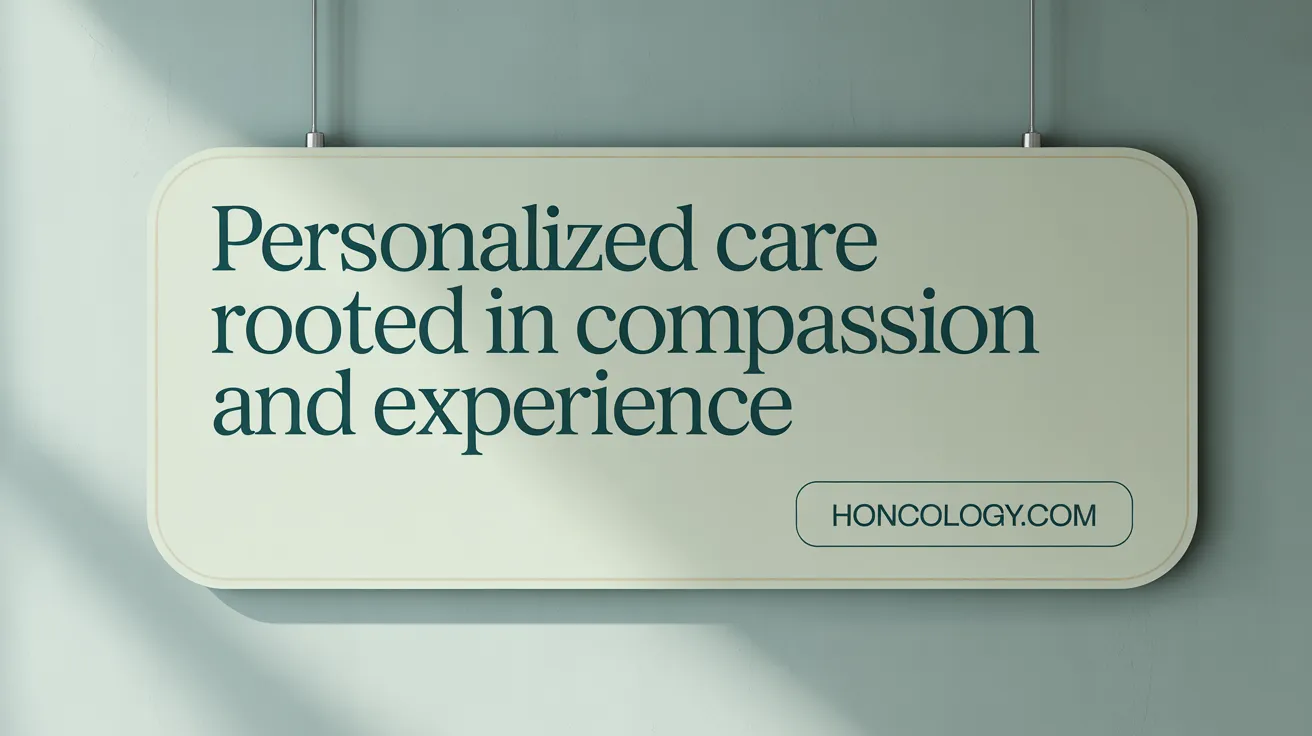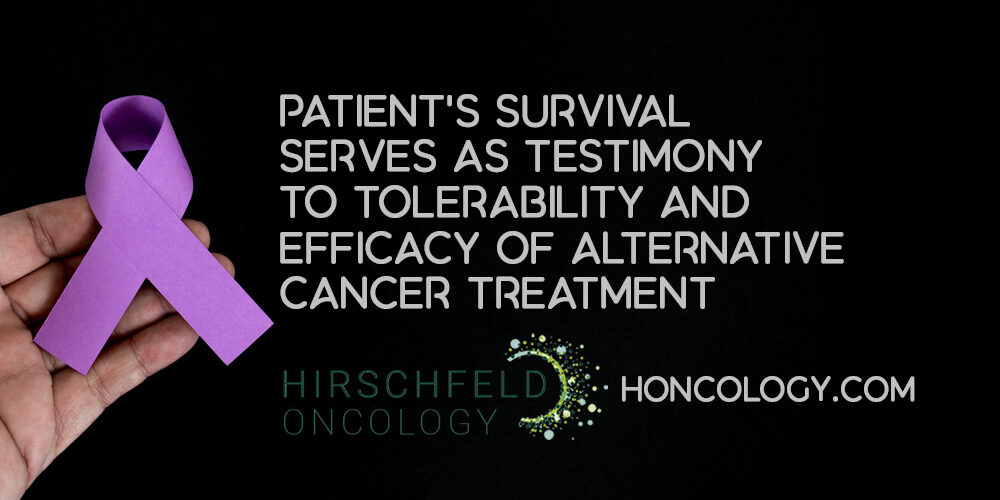Understanding Drug Repurposing in Cancer Therapy
What is Drug Repurposing?
Drug repurposing involves finding new therapeutic uses for existing medications that are already approved for other diseases. This strategy leverages drugs with proven safety profiles, enabling faster transitions into new treatment applications.
Advantages in Cancer Treatment
Repurposing drugs in oncology offers several benefits:
- Reduced development time compared to creating new drugs from scratch.
- Lower costs due to prior knowledge of safety and pharmacokinetics.
- Established safety profiles, minimizing risks during trials.
- Often improved patient access and affordability.
Examples of Repurposed Drugs with Anticancer Properties
Several drugs originally approved for non-cancer indications have shown promise against cancer:
- Metformin (anti-diabetic): Suppresses tumor growth and reduces cancer stem cells by activating AMPK and inhibiting mTOR.
- Disulfiram (alcohol aversion): Inhibits glycolysis and boosts oxidative stress in tumor cells.
- Mebendazole (antiparasitic): Disrupts microtubule polymerization, reducing metastasis.
- Statins (cholesterol-lowering): Enhance immune responses and suppress tumor invasion.
- Epigallocatechin Gallate (EGCG) (from green tea): Inhibits telomerase and key signaling pathways.
Methods to Identify Repurposed Drugs
Researchers utilize various approaches to find repurposing candidates:
- Computational screening analyzing gene expression and drug databases to match drugs reversing disease signatures.
- Phenotypic screening and organoid models that test drug effects on cancer cells.
- Network analysis and molecular docking to predict drug-target interactions.
- High-throughput screening of existing chemical libraries combined with machine learning.
These integrated methods accelerate the discovery of effective drug candidates for cancer therapy, opening new avenues for treatment innovation while leveraging the safety of existing medications.
The Promise of Repurposed Drugs in Targeting Cancer Hallmarks

What are the key anticancer mechanisms of repurposed drugs?
Repurposed drugs in cancer therapy work by modulating fundamental processes involved in tumor development and progression. They inhibit cancer cell proliferation, induce apoptosis (programmed cell death), suppress angiogenesis (new blood vessel growth that supplies tumors), and reduce metastatic spread. Many repurposed drugs also impact cancer stem cells, epigenetic pathways in cancer, and tumor metabolism, helping overcome drug resistance and improve therapeutic outcomes. Learn more about the broad mechanisms and benefits of drug repurposing for cancer therapy.
What are some examples of repurposed drugs and their roles?
- Metformin: Originally an anti-diabetic agent, metformin activates AMP-activated protein kinase (AMPK), inhibits mTOR signaling, induces cell cycle arrest, and promotes apoptosis, reducing tumor growth and cancer stem cell populations. See its role in repurposing anti-diabetic drugs for cancer therapy.
- Disulfiram: An alcohol-aversion drug, disulfiram disrupts glycolysis and elevates reactive oxygen species in cancer cells, leading to metabolic stress and apoptosis. Read about its anticancer properties in drug repurposing for cancer therapy.
- Leflunomide: Used for rheumatoid arthritis, it inhibits pyrimidine synthesis and triggers apoptosis in breast, prostate, and colorectal cancers. Details are available in repurposed drugs in cancer therapy.
- Other examples: Salidroside inhibits the PI3K/AKT pathway; oleanolic acid induces ferroptosis and autophagy; mebendazole suppresses microtubule dynamics; epigallocatechin gallate blocks telomerase; and artemisinin derivatives exhibit anti-angiogenic effects via reactive oxygen species. Explore these agents in comprehensive reviews of drug repurposing.
How do repurposed drugs target proliferation, apoptosis, angiogenesis, and metastasis?
By disrupting signaling pathways such as PI3K/AKT, mTOR, and NF-κB, these drugs inhibit tumor cell growth. They induce apoptosis through mitochondrial and caspase pathways. Angiogenesis is suppressed by lowering VEGF and HIF-1α expression, starving tumors of nutrients. Some drugs modulate the immune microenvironment to evade metastasis and tumor progression. For a detailed discussion, see mechanisms of anticancer activity of repurposed drugs.
How does nanoparticle-mediated drug delivery enhance repurposed drug therapy?
Nanoparticles, including liposomes, polymeric micelles, and metallic particles, improve the targeting and accumulation of repurposed drugs in tumors. This reduces systemic toxicity, enhances drug stability and bioavailability, and can overcome drug resistance mechanisms. Such delivery systems enable combination therapies with improved efficacy and fewer side effects, accelerating clinical translation. Learn more about nanoparticle-mediated drug delivery in oncology.
Together, repurposed drugs offer a multi-faceted approach by attacking diverse cancer hallmarks. Their known safety profiles coupled with advanced delivery technologies provide promising avenues for more effective and accessible cancer treatments. For broader context and ongoing research, visit drug repurposing in cancer research.
Clinical Trials Spotlight: Anti-Diabetic and Anti-Hypertensive Drugs in Oncology
Role of Metformin and Sulfonylureas
Metformin, a first-line medication for type 2 diabetes, has emerged as a prominent candidate in drug repurposing for cancer therapy. Extensive clinical evidence supports its capacity to reduce the incidence and progression of multiple cancers including colorectal, breast, pancreatic, prostate, lung, and cervical cancers. This effect is attributed to its activation of AMP-activated protein kinase (AMPK), inhibition of mammalian target of rapamycin (mTOR), induction of cell cycle arrest and apoptosis, and reduction of metastatic potential. Alongside metformin, sulfonylureas are under clinical evaluation, showing potential benefits in cancer prevention and therapy, though metformin has been the main focus (Repurposing anti-diabetic drugs for cancer therapy, Metformin in cancer treatment, Metformin in cancer treatment).
Beta-Blockers like Propranolol in Cancer Therapy
Propranolol, a non-selective beta-adrenergic receptor blocker traditionally used for cardiovascular conditions, is gaining attention for its anticancer effects. It is currently in Phase IV clinical trials for benign tumors and earlier phases for multiple cancer types. Its mechanisms include inhibition of angiogenesis, tumor cell proliferation, and metastasis, partially through modulating signaling pathways like p-AKT and p-ERK. Propranolol’s immunomodulatory properties also contribute to its therapeutic promise by altering the tumor microenvironment and reducing stress-related tumor progression signals (Repurposing anti-diabetic drugs for cancer therapy, Repurposing Drugs for Cancer Therapy, Drug Repurposing for Cancer Stem Cells).
Clinical Trial Phases and Current Progress
More than 92 clinical trials are actively investigating anti-diabetic and anti-hypertensive drugs across over 15 distinct cancer types. Metformin is one of the most extensively studied, advancing into Phase III trials for various malignancies, while beta-blockers like propranolol have reached Phase IV in certain contexts. Other anti-hypertensive agents, including ACE inhibitors such as captopril and losartan, are in earlier trial phases, exploring their roles in reducing angiogenesis, inducing apoptosis, and improving therapeutic response (Repurposing anti-diabetic drugs for cancer therapy, Repurposing anti-diabetic drugs for cancer therapy).
Mechanisms Affecting Tumor Growth and Immune Modulation
These repurposed drugs exert anticancer effects via diverse mechanisms: inhibiting tumor angiogenesis, modulating metabolism, inducing apoptotic pathways, and reactivating silenced tumor suppressor genes through epigenetic modifications. Notably, metformin modulates the tumor immune microenvironment by increasing cytotoxic T cells and macrophages, enhancing responses to immunotherapy. Beta-blockers disarm adrenergic signaling that supports tumor growth, while ACE inhibitors contribute to diminished tumor vascularization and enhanced apoptosis (Metformin in cancer treatment, Repurposing anti-diabetic drugs for cancer therapy.
This focused clinical trial activity underscores the substantial promise and accelerated translational potential of repurposing these chronically used drugs for oncology, aiming to improve outcomes with known safety profiles and cost-effective approaches (Drug repurposing for cancer therapy, Advantages of drug repurposing).
Breaking Barriers: Combination Therapies and Multi-Pathway Targeting

What Are the Benefits of Combination Therapy?
Combination therapy uses two or more drugs to attack cancer through different mechanisms simultaneously. This approach enhances treatment effectiveness beyond what monotherapy offers by targeting multiple cancer pathways. It helps reduce drug resistance, lowers tumor growth and metastasis, and decreases cancer stem cell populations that often drive relapse [source](https://pmc.ncbi.nlm.nih.gov/articles/PMC5514969/), [source](https://www.nature.com/articles/s41392-024-01808-1#ref-CR40).
How Do Repurposed Drugs Work Together Synergistically?
Repurposed drugs, originally approved for other conditions, can complement conventional cancer treatments. When combined, they often produce synergistic effects where the collective impact exceeds the sum of individual effects. For example, some repurposed drugs may inhibit cancer cell metabolism, while others modulate the immune response or affect epigenetic regulation [source](https://www.sciencedirect.com/science/article/pii/S2405844021000530), [source](https://www.nature.com/articles/s41392-024-01808-1).
What Are Examples of Effective Drug Combinations?
- Metformin and Chemotherapy: Metformin, known for diabetes treatment, can inhibit cancer stem cell renewal and enhance chemotherapy sensitivity. Its combination with agents like doxorubicin or 5-fluorouracil has shown reduced tumor cell viability and increased apoptosis in preclinical studies [source](https://pmc.ncbi.nlm.nih.gov/articles/PMC10296024/), source.
- Propranolol and Cancer Therapy: Propranolol, a beta-blocker, is being evaluated for cancers such as breast and multiple myeloma. It may amplify chemotherapy effects and lower tumor proliferation by modulating stress-related signaling source.
- Combination Regimens: Metformin combined with propranolol and vitamin D3 has demonstrated promising in vivo results, reducing tumor growth and improving immune responses source.
How Does Combination Therapy Address Cancer Stem Cells and Resistance?
Cancer stem cells (CSCs) are often resistant to single-agent therapies and contribute to recurrence. Drug repurposing offers agents like metformin and salinomycin, which specifically target CSC pathways (e.g., Wnt/β-catenin, Notch). Using these drugs in combination with chemotherapy can eradicate both bulk tumor cells and CSCs, potentially overcoming resistance and improving long-term outcomes [source](https://www.sciencedirect.com/science/article/pii/S2352304223000089), source.
In summary, combining repurposed drugs with established therapies provides a robust strategy to disrupt multiple cancer survival pathways, minimize resistance, and target elusive CSCs. This multi-pathway targeting holds promise to enhance the efficacy of cancer treatments and reduce relapse rates source.
| Aspect | Description | Examples |
|---|---|---|
| Combination Therapy Benefits | Enhanced efficacy, reduced resistance, lower metastasis | Metformin + Chemotherapy source |
| Synergistic Effects | Greater combined effect than individual drugs | Propranolol + Chemotherapy source |
| Targeting Cancer Stem Cells | Drugs affect CSC pathways to reduce relapse risk | Metformin, Salinomycin source |
| Multi-Pathway Approach | Targets metabolism, signaling, epigenetics simultaneously | Metformin + Propranolol + Vitamin D3 source |
Innovations at Hirschfeld Oncology: Integrating Repurposed Drugs with Advanced Care

How does Hirschfeld Oncology’s medical team collaborate to provide comprehensive cancer care?
Hirschfeld Oncology employs a robust multidisciplinary collaboration model to deliver comprehensive cancer care. The practice integrates physicians, nurses, and support staff from various specialties in both sequential and concurrent multidisciplinary clinics (MDCs). This coordinated approach allows for personalized, patient-centered treatment planning, particularly for complex cases requiring advanced therapies. Learn more about Azriel Hirschfeld, M.D. and the medical oncology expertise at Hirschfeld Oncology and Dr. Azriel Hirschfeld's comprehensive cancer treatment approach.
Through MDCs, team members communicate closely, exchanging insights that guide clinical decisions and optimize patient outcomes. This dynamic collaboration drives a seamless care experience, reflected in high patient satisfaction scores across numerous clinics managed by the institute.
What novel immunotherapy and radiotherapy techniques are used at Hirschfeld Oncology?
The center actively incorporates cutting-edge immunotherapy protocols alongside precision radiotherapy techniques. These include reduced-intensity and metronomic chemotherapy schedules combined with immunomodulatory treatments tailored to each patient’s tumor biology and immune response. Such integration aims to maximize therapeutic efficacy while minimizing toxicity. Related innovative cancer treatment strategies and immunotherapy advancements are discussed in articles about drug repurposing in cancer therapy and enhanced systemic immune responses via immunotherapy.
How do digital health tools support personalized treatment plans?
Hirschfeld Oncology leverages advanced digital health platforms that facilitate remote monitoring, data sharing, and symptom tracking. These tools enhance real-time communication between patients and providers, enabling timely treatment modifications. Digital integration also supports translational research efforts, accelerating clinical trial participation and personalized medicine initiatives. The role of digital technologies and computational approaches in accelerating drug repurposing and leading to personalized medicine is highlighted in studies such as computational drug repurposing and network analysis and advanced cancer detection via AI-driven genomic profiling.
How does Hirschfeld Oncology demonstrate commitment to compassionate, evidence-based care?
The practice prioritizes empathetic patient interactions rooted in the latest scientific evidence and clinical guidelines. Providers emphasize clear communication, shared decision-making, and holistic support throughout the cancer journey. Their approach balances novel therapies—such as repurposed drugs in cancer treatment—with established standards to deliver effective, patient-focused care. Insights on evidence-based integrative therapies, patient preferences, and the science behind compassionate oncology care can be found in resources covering supportive care and integrative oncology therapies and the use of repurposed drugs in cancer treatment.
Together, Hirschfeld Oncology’s multidisciplinary teamwork, innovative therapeutic strategies (including epigenetic pathways in cancer), utilization of digital health, and compassionate philosophy exemplify a modern, integrated model advancing cancer treatment outcomes.
Innovative Therapeutic Strategies Beyond Standard Treatments at Hirschfeld Oncology

What innovative strategies does Hirschfeld Oncology use alongside standard therapies to redefine cancer care?
Hirschfeld Oncology integrates a spectrum of innovative approaches with traditional cancer treatments to redefine patient care. Advanced radiotherapy methods such as three-dimensional conformal radiotherapy (3D-CRT) and volumetric modulated arc therapy (VMAT) are employed to deliver highly precise radiation doses while minimizing damage to healthy tissues. One notable use is continuous hyperfractionated and accelerated radiotherapy (CHART), an accelerated regimen beneficial for patients unable to tolerate chemotherapy, particularly in settings with limited resources, demonstrating favorable safety and effectiveness.
Immunotherapy forms a cornerstone in their innovative repertoire, including the use of AlloStim® immunotherapy. This cutting-edge approach aims to transform immunologically 'cold' tumors—those that evade immune detection—into 'hot' tumors that are more responsive to immune attacks, thereby enhancing therapeutic success in otherwise resistant cancers.
Moreover, Hirschfeld Oncology explores combination therapies utilizing antibody–drug conjugates (ADCs), radioligand therapies, and bispecific antibodies. These modalities are frequently compounded with immune checkpoint inhibitors to attack cancer through multiple pathways simultaneously, potentially yielding synergistic effects that improve patient outcomes.
Supporting these advanced treatments is the use of real-time diagnostics and digital health technologies. This integration allows for continuous monitoring and adaptive, personalized treatment planning, ensuring therapies are precisely tailored to the biological characteristics of each patient’s cancer and response patterns.
These comprehensive, multi-dimensional strategies highlight Hirschfeld Oncology's commitment to integrating science-driven innovation with compassionate, individualized patient care.
The Role of Compassion and Experience in Personalized Oncology at Hirschfeld

In what ways does Hirschfeld Oncology incorporate compassion and experience into its cancer treatment plans?
Hirschfeld Oncology exemplifies a deeply compassionate and experienced approach to cancer care by focusing on holistic, patient-centered treatment plans. Their care model integrates not only physical symptom management but also addresses the emotional and psychosocial challenges patients face during their cancer journey.
Symptom management is a cornerstone of their practice, where strategies to alleviate pain, fatigue, nausea, and other distressing symptoms are meticulously applied. This promotes patient comfort and enhances quality of life.
Acknowledging the vital importance of mental health, Hirschfeld Oncology involves mental health specialists, pastoral counselors, and social workers in their multidisciplinary teams. These professionals provide psychological support, counseling, and practical assistance to both patients and their families.
Their extensive clinical experience allows them to design interventions personalized to each patient's cultural and individual needs. These tailored, culturally sensitive approaches foster trust, respect, and empathy, ensuring that care plans resonate with patients' values and backgrounds.
By merging comprehensive symptom control with psychosocial support within a culturally competent framework, Hirschfeld Oncology delivers truly personalized oncology care that respects and responds to the whole person, not just the disease.
Recent Advances Illustrated by Preclinical and Clinical Findings

Examples of drugs repurposed to reverse Alzheimer's pathology: letrozole and irinotecan
Researchers have identified two cancer drugs, letrozole and irinotecan Alzheimer's treatment, as promising candidates to reverse Alzheimer's brain damage in mice. Using computational analysis of gene expression data from the Connectivity Map database drug discovery, these FDA-approved cancer drugs were found to reduce harmful tau protein aggregates linked to Alzheimer's. In mouse models, the drug combination improved memory and learning deficits. Letrozole mainly acts on neurons, while irinotecan targets glial cells, highlighting a multi-pronged drug approach for Alzheimer's.
Emerging clinical successes with selinexor in NSCLC
Selinexor drug in NSCLC, initially approved for multiple myeloma and lymphoma, shows encouraging results in difficult-to-treat non-small cell lung cancer (NSCLC) patients with KRAS mutations. In a clinical trial, weekly selinexor combined with chemotherapy controlled tumor growth in about 80% of patients. These results include responses across mutation subtypes, positioning selinexor as a potential multi-target agent in NSCLC therapy.
Anti-malarial drugs reducing dormant breast cancer cells
A pioneering clinical trial using repurposed anti-malarial drugs like hydroxychloroquine cancer study demonstrated clearance of dormant breast cancer cells in 80% of survivors. These dormant tumor cells are responsible for cancer recurrence years after initial treatment. Patients treated with these drugs showed high disease-free survival rates over three years, validating the strategy of targeting minimal residual disease to prevent relapse, as discussed in the Pioneering breast cancer treatment strategy.
The targeting of cancer stem cells via repurposed drugs
Cancer stem cells (CSCs) are critical in tumor growth, drug resistance, and metastasis. Repurposed agents such as metformin in cancer treatment, aspirin as an anti-cancer agent, niclosamide's role in cancer therapy, and all-trans retinoic acid modulate key CSC pathways including Wnt/β-catenin and Notch. Combinations of these drugs with micronutrients enhance anti-CSC effects. Ongoing clinical trials are evaluating the efficacy of such repurposed therapies to overcome therapeutic resistance and improve cancer outcomes.
Challenges and Future Directions in Repurposed Drug Research
What are the major pharmacological and regulatory hurdles in drug repurposing?
Drug repurposing offers exciting prospects but faces significant challenges. Pharmacologically, many repurposed compounds need higher effective doses than originally approved, raising safety concerns. The complex genetic and proteomic cancer changes demand multifaceted therapeutic targeting, complicating dose optimization. Regulatory barriers also pose delays since repurposed drugs must undergo safety and efficacy evaluation in the cancer context despite existing approvals for other indications (Drug repurposing for cancer therapy, Advancing the human right to health in cancer care).
Why are randomized clinical trials critical for validating repurposed drugs?
Randomized clinical trials are essential to confirm the cancer-fighting effectiveness and safety profiles of repurposed drugs. Such trials reduce biases inherent in observational or preclinical studies and provide rigorous evidence needed for clinical adoption. For example, institutions like the Winship Cancer Institute emphasize the need for well-designed randomized studies to establish treatment efficacy and prevention of recurrence using repurposed agents (Repurposing FDA-approved drugs for cancer treatment).
How can patent and financial barriers be overcome?
Most repurposed drugs are off-patent generics, classed as 'financial orphans,' leading to low commercial interest. This lack of profitability causes limited funding for large clinical trials and market adoption. Addressing this requires dedicated funding mechanisms, academia-industry partnerships, policy reforms to safeguard against patent abuse, and advocacy campaigns to educate stakeholders on repurposing benefits (Drug repurposing in cancer treatment, Advancing the human right to health in cancer care.
What role do academic centers and collaborative research play?
Academic health centers are crucial in advancing repurposed drug research. They lead rigorous preclinical testing, clinical trials, and biomarker discovery, ensuring safety and precision medicine approaches. Collaboration across disciplines accelerates innovation, optimizes combination therapies, and expands testing into different cancers. Multi-institutional efforts help surmount obstacles associated with drug development costs and regulatory requirements (Mass General Drug Repurposing Research, Repurposing FDA-approved drugs for cancer treatment, Drug repurposing in oncology30610-0/fulltext)).
Overall, overcoming these challenges through coordinated efforts and well-structured clinical research will unlock the full potential of repurposed drugs in cancer therapy.
Embracing Repurposed Drugs for a Transformative Future in Cancer Care
Unlocking New Potential with Repurposed Drugs
Repurposed drugs—those originally approved for other conditions—are making waves in cancer treatment due to their established safety, lower development costs, and expedited clinical availability. These drugs target diverse cancer pathways such as metabolism, immune responses, and cell proliferation, often showing promise in overcoming resistant tumors or dormant cancer cells.
Innovation Through Integration: Hirschfeld Oncology's Approach
Dr. Azriel Hirschfeld and his team exemplify multidisciplinary care by combining established chemotherapy with cutting-edge research-driven therapies. Their personalized, science-based model leverages drug repurposing to optimize treatment options for challenging cancers, aiming to improve outcomes and patient quality of life.
Advancing Research with Patient-Centered Focus
While repurposed drugs offer hope, continued rigorous research—including clinical trials and biomarker development—is essential to establish their full therapeutic potential. Emphasizing patient-centered care ensures that these innovations translate effectively into practice, enhancing survival and well-being.
| Aspect | Highlights | Impact |
|---|---|---|
| Repurposed Drugs | Known safety, rapid development | Cost-effective, accessible cancer treatments |
| Hirschfeld Oncology | Combines chemotherapy and novel therapies | Personalized, integrated cancer care |
| Research & Patient Focus | Ongoing trials and biomarker studies | Evidence-based, patient-centered innovations |





.png)


.png)
.png)




